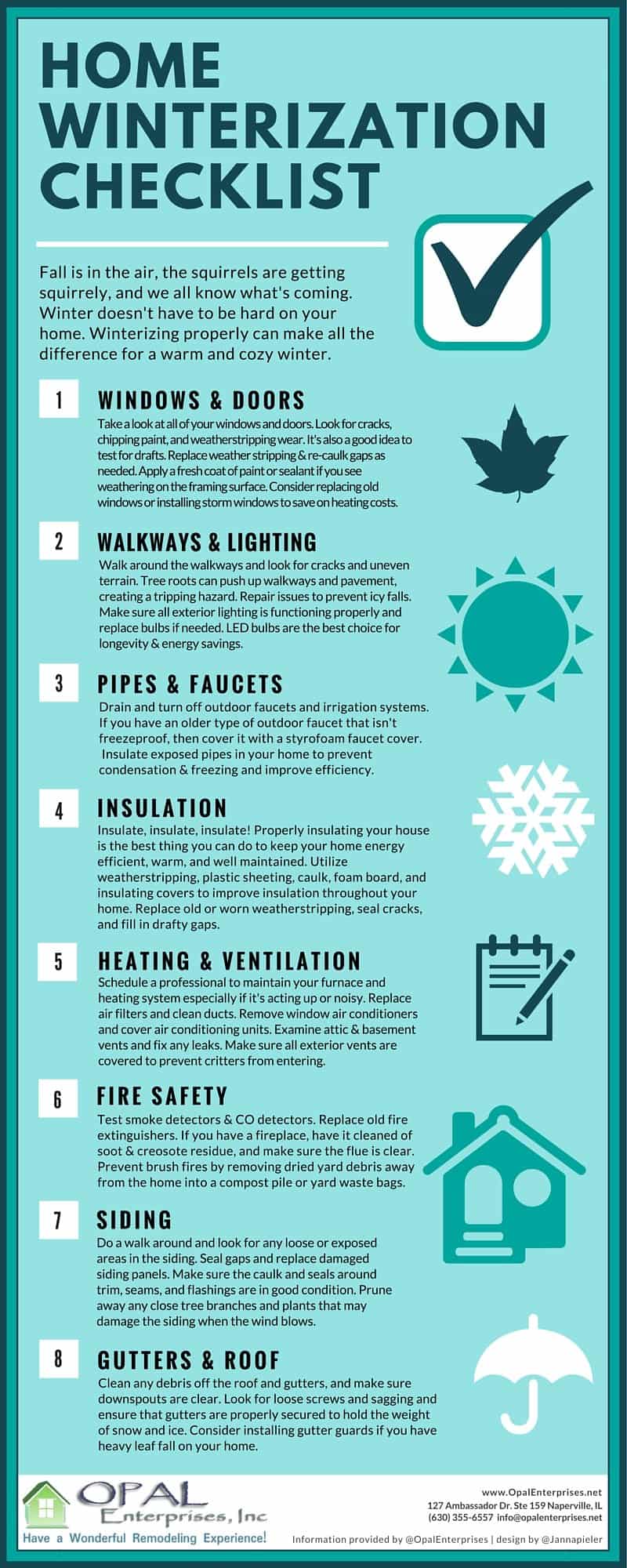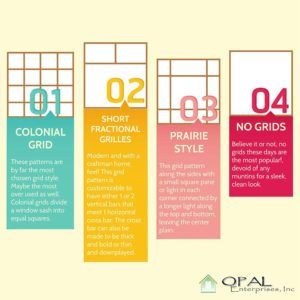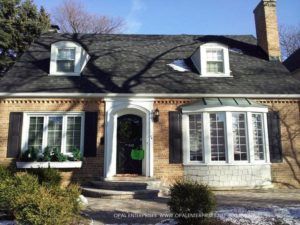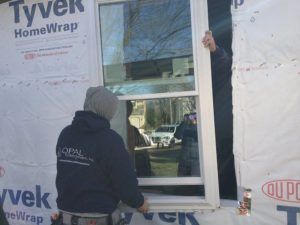Preparing for winter by evaluating a home’s condition and fixing potential problems is part of the annual routine for homeowners in many parts of the country. This is known as winterizing and is especially crucial in the Chicago area, where frigid winter temps average 26.4 degrees.
Home winterization will protect your home and keep it more comfortable and cozy inside but can be a fairly extensive project. Also, multiple steps could be easy to overlook. To help, Opal Enterprises has compiled this handy checklist to help you winterize your home this fall.

Here’s a more detailed breakdown from the home winterization checklist:
Seal Your Windows and Doors
A properly sealed and efficient home is a necessity during the chilly winter months. Not only will this save you money on heating costs, but it will also protect your property from rot and damage due to condensation and freezing.
Cold air from the outside is most likely to enter your house through the windows and doors. Walk around your home and examine these entry points, paying particular attention to the frames and sills. Look for cracks, chipping paint, and weatherstripping wear. You should also be aware of how to test if windows are drafty so you can avoid high energy bills and a cold home when winter comes.
If you discover signs of wear or leaking, try quick fixes that may help, including:
- Replacing weather stripping
- Re-caulking gaps as needed
- Applying a fresh coat of paint or sealant if you see weathering on the framing surface
Questions? Call 847-380-8868 in Des Plaines and 888-676-6725 in Naperville
Level and De-Ice Your Walkways and Entryways
Walk the outside of your home and look for cracks and uneven terrain. Tree roots can push up walkways and pavement, creating a tripping hazard. You’ll want to repair these issues before winter to prevent icy and dangerous falls.
Reliable railings are especially vital when the ground is slick with ice and rain, and now is the time to make sure they are sturdy. If yours seem wobbly, reinforce them as soon as possible for the safety of your family and guests.
Place a shovel and a container of ice melt by each entryway for convenient and hassle-free snow removal.
Optimize Your Outdoor Lighting
Your home’s exterior lighting must function correctly during the long, dark winter evenings. Replace any bulbs that don’t come on when you flip the switch, using LED rather than incandescent or CFL options for longevity and energy savings.
You should also make sure there are enough lights installed so that all the walkways around your home are well lit. Add new pathway lights if needed to help visitors see better on snowy nights.
Learn more about our top-of-the-line products in Naperville 888-676-6725
Protect Your Pipes and Faucets
When the temperatures dip below freezing, any water in your outdoor hoses or pipes could expand and cause potentially expensive damage. So, be sure to drain the water and turn off your faucets and irrigation system before the first frost.
You may also need to insulate some of your plumbing components to protect them during the cold winter months. For example:
- Insulate exposed pipes in your home to prevent condensation, freezing, and inefficiency
- If you have an older type of outdoor faucet that isn’t freeze-proof, cover it with a styrofoam cover
Insulate Your Home to Keep Cold Air Out
Properly insulating your property as a home winterization measure is the best thing you can do to keep it energy-efficient, warm, and well maintained. In addition to weatherstripping your doorways and windows, you can also block out cold air by:
- Applying plastic sheeting or installing storm windows on your single pane windows
- Fill cracks and drafts with caulk, foam board, or insulation
- Using insulating covers on light switches and outlets
Tune Up Your Heating and Ventilation System
You don’t want to be caught off guard mid-winter with a broken furnace. Schedule professional maintenance for your heating, ventilation, and air conditioning (HVAC) system, especially if it’s become unreliable or noisy. A faulty furnace can be a carbon monoxide risk and may not heat as efficiently.
You can also increase the energy efficiency of your unit this winter by:
- Replacing your air filters
- Cleaning the HVAC ductwork
- Removing window air conditioners
- Covering standing air conditioning units
- Examining your attic and basement vents and fixing any leaks
- Making sure all exterior vents are covered with cages or grates to prevent pests from entering
Take Steps to Increase Your Home’s Fire Safety
With the increased use of furnaces and fireplaces, your home may have an elevated fire risk during the winter months. Thankfully, there are steps you can take to offset this risk and increase your home’s fire safety:
- Test your smoke detectors and carbon monoxide detectors
- Replace old fire extinguishers
- Clean your fireplace of soot and creosote residue and make sure the flue is clear (this residue is a fire hazard, and it’s essential to have your fireplace cleaned periodically, even if you don’t use it often)
- Remove dried yard debris and place it in a compost pile or waste bags away from your house to avoid a dangerous brush fire
- Use fire-resistant building materials like James Hardie siding whenever you remodel or upgrade
Reinforce and Clear Your Gutters and Roof
Leaves, snow, and ice can accumulate on your roof and in your gutters in the winter, adding considerable weight and potentially causing your shingles to deteriorate. Winterize your home’s roof and eaves by:
- Making sure your downspouts are clear. When they are clogged, rain and melting snow won’t be able to drain correctly.
- Checking your gutters for loose screws and sagging. You should take steps to reinforce them if necessary to make sure they are ready to hold the weight of snow and ice.
- Installing gutter guards to prevent clogging if you have heavy leaf fall on your home.
- Installing a roof de-icing system to melt snow and ice before it can build up.
Call Opal When You’re Ready to Upgrade
Following these home winterization checklist tips will help protect your home and get it ready for winter. At some point, however, short-term solutions won’t be enough. For example, if you’re still feeling drafts, you might need to consider replacing old windows, doors, or siding to save on heating costs.
Contact the expert installers at Opal Enterprises or visit one of our showrooms to see the wide range of products available when you’re ready to upgrade. We offer free consultations, convenient financing options, and labor warranties to ensure your satisfaction.




